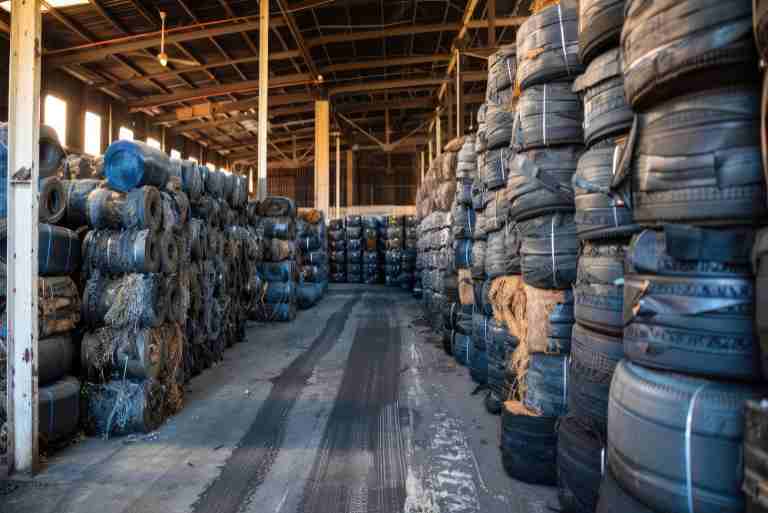Have you ever wondered why rubber bands stretch and return to their original shape? Or how car tires grip the road in rain, heat, and even snow? Why does rubber make the shoe soles bouncy but also make industrial seals that handle pressure? All because of the material’s natural properties and the science behind its creation.
This blog focuses on the science behind rubber products: how rubber product manufacturers make rubber products, what gives them their special characteristics, and how they are used across different fields.
The Birth of Rubber: Where It All Begins
Rubber can come from two primary sources:
- Natural rubber
- Synthetic rubber
Natural rubber is harvested from the latex of rubber trees, which are mostly grown in Thailand, Indonesia, and India. The process starts when the milky liquid is tapped from the tree. Then, it’s processed to remove water and impurities before being turned into rubber sheets.
Conversely, synthetic rubber is made in a lab, usually from petroleum-based materials. It can be tailored for specific jobs, such as heat resistance or more flexibility.
The Manufacturing Process
Turning raw rubber into usable rubber involves science and engineering. Here’s how rubber product manufacturers
1. Compounding
Rubber alone is not strong enough for most uses. Therefore, it must be mixed with various materials to improve its strength, flexibility, and durability. Here are the ingredients used, along with their purposes:
- Carbon black adds strength and resistance to wear.
- Sulfur helps with vulcanization.
- Oils and waxes improve flexibility and protect against the weather.
- Antioxidants prevent the rubber from cracking over time.
Together, this mixture creates a base. Later, that can be used to form different rubber items.
2. Mixing and Milling
In this step, rubber is mechanically kneaded using heat and pressure to make it softer and easier to mix with other ingredients. The result is a homogeneous mixture.
3. Shaping
The homogenous mixture of rubber is then shaped using one of the following methods:
Extrusion: Rubber is pushed through a mold to form long shapes like tubes or gaskets.
Molding: Rubber is placed in molds and is heated to take on a specific form.
Calendaring: Rubber is flattened into thin sheets using a pair of rollers.
4. Vulcanization
Vulcanization, or curing, is a chemical process in which sulfur forms bridges between rubber polymer chains. These “cross-links” make rubber elastic and tough. Otherwise, rubber would stay sticky and weak.
5. Finishing
Rubber undergoes finishing processes like trimming and surface treatments to meet the requirements.
Also Read: Why Quality Matters: How to Choose the Right Rubber Products Manufacturer in India
Material Properties That Make Rubber… Rubber
Rubber’s molecular structure and the cross-links formed during vulcanization make it valuable. Specifically, here are some of its key characteristics:
- Elasticity: Rubber stretches and then returns to its original shape. Its molecules are shaped like coiled springs that can straighten and then recoil.
- Durability: Rubber can handle pressure, repeated use, and harsh environments without breaking easily.
- Flexibility: Even at low temperatures, many types of rubber remain soft and bendable.
- Chemical Resistance: Certain synthetic rubbers can resist oil, heat, and chemicals.
- Electrical Insulation: Rubber does not conduct electricity well, making it ideal for use in wires and cables.
However, not all rubbers behave in the same way. Consequently, rubber product manufacturers tweak the formulation depending on what the final product needs to do.
Everyday Applications of Rubber
When you think of rubber, you’re likely to think of tires. Fair enough. However, rubber’s reach is way broader than that.
In the automotive industry, rubber helps decrease noise, absorb vibrations, and withstand heat. As a result, it is used in car tires, engine belts, hoses, gaskets, and seals.
Rubber offers flexibility and cleanliness. Therefore, medical gloves, tubing, and bottle stoppers are made from it.
In industrial settings, rubber helps machines run smoothly. Additionally, it decreases wear and tear. Consequently, factories commonly use conveyor belts, seals, and vibration dampers.
When it comes to consumer goods, rubber is used in erasers, yoga mats, shoe soles, and even chewing gum.
Finally, rubber is used in electrical wiring and devices to protect against shock and moisture.
Also Read: The Role of Rubber Products in Industrial Applications: A Complete Guide
Wrapping It Up
Rubber is the result of detailed science and careful design. Each step in the process creates reliable, long-lasting rubber products. Moreover, its special properties like elasticity, strength, and resistance come from a blend of nature and innovation. So, every rubber item you use is backed by years of development and rigorous testing.
Shree Rubber Works is one of the leading rubber product manufacturers in India, serving for more than three decades now. We offer a wide variety of rubber products, such as hoses, expansion joints, rubber sheets, molded items, rubber bellows, and more.
Contact us today to discuss how we can meet your requirements for rubber products.

